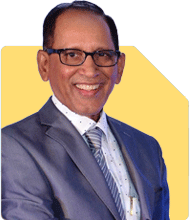Kanchan Rai |645 Answers |Ask -Follow
Relationships Expert, Mind Coach - Answered on Jan 07, 2024
Rai has a degree in leadership development and customer centricity from Harvard Business School, Boston. She is an internationally certified coach from the International Coaching Federation, a global organisation in professional coaching.... more

I am 40+. I worked for a few years after Post Grad and due to family constraints had taken a long sabbatical. About 5 years ago I went to back to work moved from small firms to a corporate. However, I find myself still at the entry level position. My colleagues at the same level were not even born when I finished my college. I really feel very old amongst them and cannot gel with them also it bugs me that people of my age in the firm are at very senior position.Switching over jobs I dont will make sense either as it will be the same trend everywhere. I dont know how to address this issue. Please suggest
Career progression can take time, especially when re-entering the workforce after a break. Stay persistent, continue to demonstrate your skills and dedication, and be patient as you work towards your goals.
You may like to see similar questions and answers below
Mayank Rautela | Answer |Ask -Follow
HR Expert - Answered on Aug 24, 2022
Nitin Sathe | Answer |Ask -Follow
HR, Recruitment Expert - Answered on Sep 22, 2023
Dr Dipankar Dutta |1836 Answers |Ask -Follow
Tech Careers and Skill Development Expert - Answered on Dec 05, 2025
Ulhas Joshi |280 Answers |Ask -Follow
Mutual Fund Expert - Answered on Dec 05, 2025
Dr Dipankar Dutta |1836 Answers |Ask -Follow
Tech Careers and Skill Development Expert - Answered on Dec 04, 2025
Ravi Mittal |676 Answers |Ask -Follow
Dating, Relationships Expert - Answered on Dec 04, 2025
Anu Krishna |1745 Answers |Ask -Follow
Relationships Expert, Mind Coach - Answered on Dec 04, 2025
Anu Krishna |1745 Answers |Ask -Follow
Relationships Expert, Mind Coach - Answered on Dec 04, 2025
Mayank Chandel |2562 Answers |Ask -Follow
IIT-JEE, NEET-UG, SAT, CLAT, CA, CS Exam Expert - Answered on Dec 04, 2025
Mayank Chandel |2562 Answers |Ask -Follow
IIT-JEE, NEET-UG, SAT, CLAT, CA, CS Exam Expert - Answered on Dec 04, 2025
Mayank Chandel |2562 Answers |Ask -Follow
IIT-JEE, NEET-UG, SAT, CLAT, CA, CS Exam Expert - Answered on Dec 04, 2025
Mayank Chandel |2562 Answers |Ask -Follow
IIT-JEE, NEET-UG, SAT, CLAT, CA, CS Exam Expert - Answered on Dec 04, 2025


























